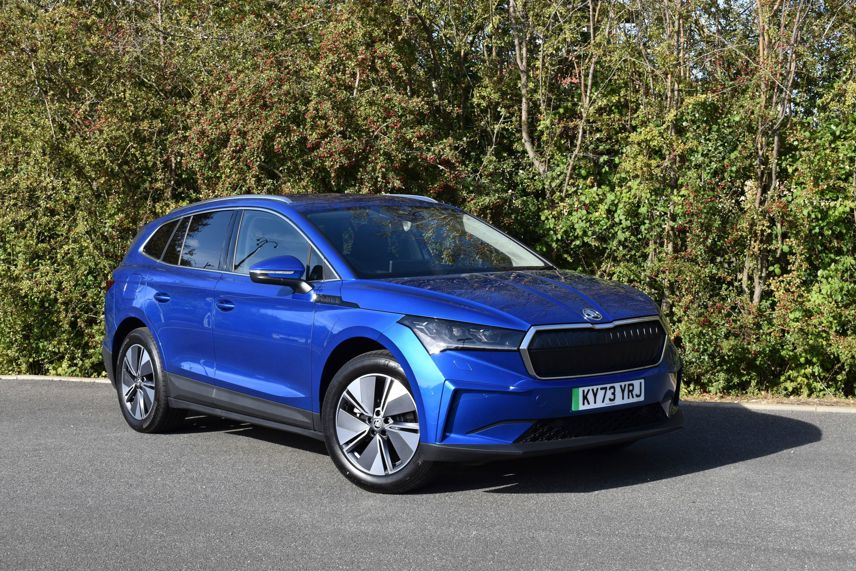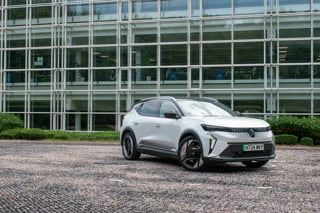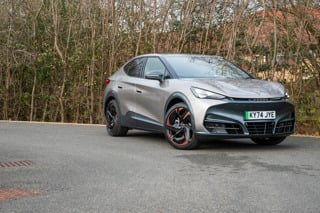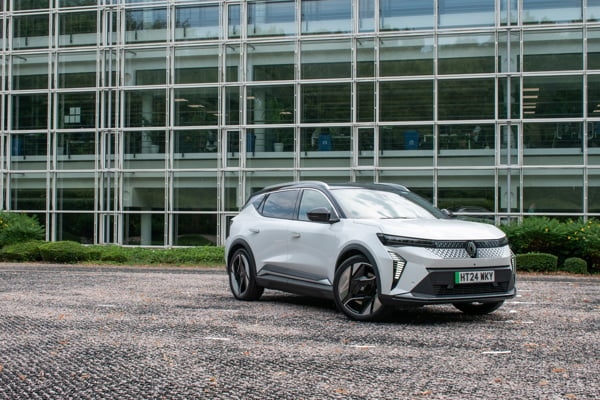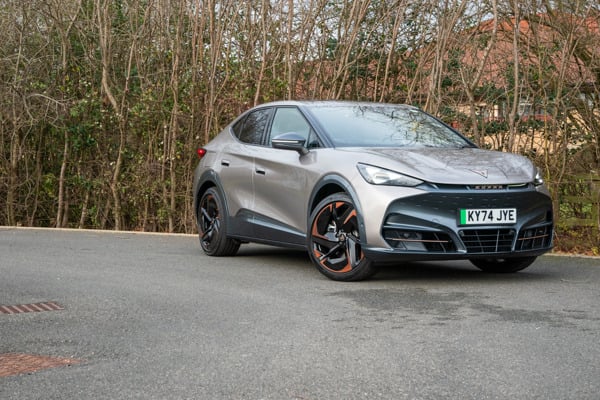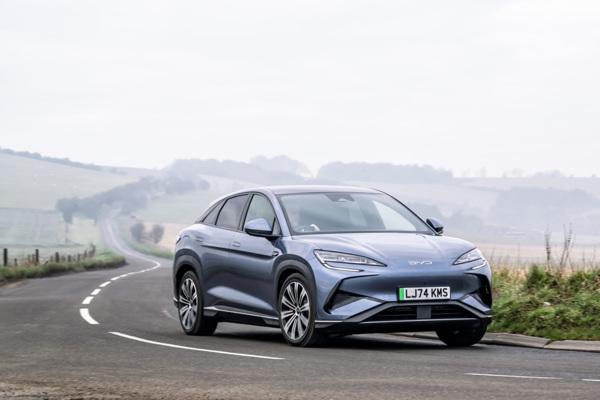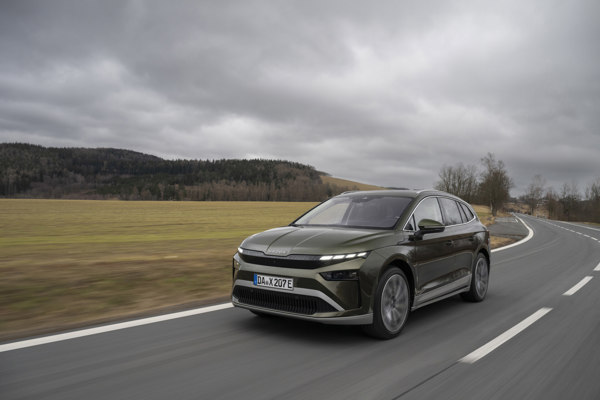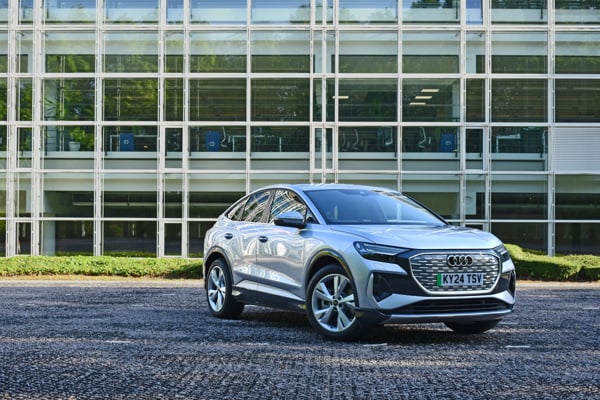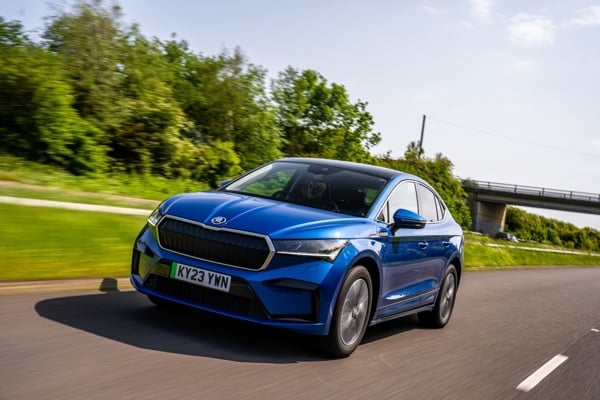Review
The past six months have seen our Skoda Enyaq 80 cover thousands of miles up and down the country for business trips and holidays.
In the time since we took delivery of the car, Skoda has updated the powertrain. The new Enyaq 85 carries over the practicality and comfort of the 80 but boosts power by 82PS and extends the range by an additional 12 miles.
We never felt the Enyaq was lacking in oomph, but the additional power is a welcome addition. The 80 provides very linear acceleration, whereas other EVs we've tested feel a little more eager.
As I think back over my likes and dislikes, the Enyaq has proved itself capable, comfortable, and enjoyable time and again, whether driving round town or on long haul journeys. My only bugbear is the cost of UK rapid chargers, which is obviously no fault to the Enyaq but is still something that could put drivers off EV’s. A recent three-day trip up north to the Newcastle area meant I had to rely on public chargers. It was a costly experience and would have been much cheaper and ultimately more convenient in a petrol or diesel car.
Nevertheless, it was a journey in understated luxury and comfort thanks in part to the battery being housed under the floor and the compact motor mounted beneath the boot floor, (the Enyaq is rear wheel drive) the result, is a spacious interior with a flat floor and a boot that can hold 585-litres of luggage. This can be extended to 1,710 litres with the rear seats folded.
There are no complaints from the family. Rear legroom is especially generous and there's roll-up sunshades for the rear windows as well as separate temperature controls for those in the back.
The driving position has a broad range of height and lumbar support adjustments and there’s plenty of legroom, it also has a heated steering wheel which adds to the premium feel and is a welcome addition in the colder weather. In the rear, the Enyaq offers exceptional levels of leg and foot room thanks to that flat floor. It really is a great car.
We spent the bulk of our time with the Enyaq during the colder winter months. Despite this, it managed impressive efficiency of 3.4mi/kWh over 8,000 miles - enough for a comfortable 250 miles between charges.
Fleet drivers should be very happy to have the Enyaq included on their company car choice list.
Family holiday is ultimate range test
Range anxiety is becoming a thing of the past! Long journeys do take a bit more forward planning than in an ICE vehicle, however.
My most recent trip in the Enyaq was a week long holiday in Devon, 280 miles from my home near Peterborough and the longest period of time I’ve been away in an EV.
In the past, I'd have looked to swap into a petrol or diesel car to save the 'hassle' of having to find places to charge. But, with more and more drivers making the switch to EV, with no other vehicle at their disposal, it seemed like the ideal opportunity to really put the the car to the test.
After my initial test of a public fast charger, last month, I felt at ease with a long journey and, although on paper the Enyaq could make it on a single charge with an indicated 313 miles at the start of the journey (it’s official WLTP range is 339 miles), it was to be loaded with family and belongings, so I had identified a few potential charge stops on route.
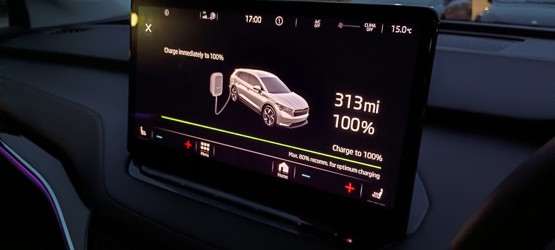
I opted to stop just outside Bristol, around 175 miles into the journey, at a 100kW charger (the Enyaq can charge at 125kW). After a tap of my bank card we sat down to eat and I was able to keep check on the cars progress through the MySkoda app. As I had already checked with the owner of the holiday property that I could charge from a three-pin plug while I was there, I didn’t need a long charge. So, after 20 minutes I unplugged, with plenty of range for the rest of my journey.
The additional occupants didn’t seem to alter the Enyaq’s efficiency figure, achieving 3.5mi/kWh across the mainly motorway and A-road journey.
Charging from a three-pin plug was less successful, with the MySkoda app indicating a speed of just 1kW. Additionally, if we boiled the kettle while the car was charging it would trip the electrics to the house, but that was down to the old house rather than the car - the compatibility of your property is something to consider when choosing an EV. This did mean more planning was needed during our stay for trips out and we found it easier (although more expensive) to utilise public chargers.
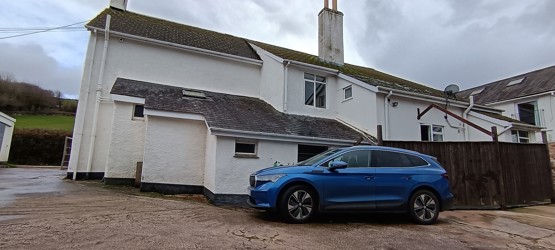
On the return journey, while charging at a motorway services, I tapped my card to end the charge, the display on the charger ended and returned to the home screen however the car indicated it was still charging and wouldn’t release the cable. No amount of locking/unlocking the car helped. After several minutes of panic I noticed an ‘End Charge’ button on the Enyaq’s dashboard display, which resolved the problem.
The Enyaq proved itself to be excellent for this kind of journey - roomy, comfortable and with a decent usable range, it is made for eating up the miles in comfort.
Charging made simple
The Enyaq is a great car. With its high equipment level, comfortable premium feel cabin and an official WLTP range of 339 miles, it's well suited to long journeys.
Even though I’ve been driving EVs for some time now I have managed to avoid the need to use a public ‘payed for’ charger, through either charging at work, charging at home or by using a free to use charger in my local town (which have since been removed). Next week however, I’m taking the Skoda to Devon for a week where I will have no choice but to use the public charging network.
Plugged into an AC charger (22kW) the Enyaq charges at a maximum of 11kW, which according to the dashboard display adds 40miles of charge per hour. This takes around six hours to fully charge the 82kWh battery when it’s low.
Ahead of my trip I wanted to check how fast a public fast charger is and how much it was likely to cost. I plugged into a 50kW charger, the dash display indicated it would add an impressive 170 miles to the battery in one hour. As this was just a test, I returned and unplugged around 25 minutes later having added an indicated 80 miles which I was able to monitor via the Skoda app. The cost for this was £13 which Is equivalent to the cost of two gallons of diesel at today’s average price of 150.9p per litre.
Of course, the Skoda is capable of utilising much faster chargers. At a suitable rapid device, the Enyaq can charge at 125kW. This means a 10% to 80% charge - providing more than 200 miles of driving - can be added in 35 minutes, which is about the same amount of time it takes to have a comfort break and have some snacks.
Finding a charge point is pretty straightforward using the Skoda's sat-nav system. You can search for and navigate directly to a charger in a location of your choosing, or simply enter your route and let the car work out if a charging stop is needed. Charge points can also be found using the MySkoda app and then sent to the car's navigation system, prior to a journey.
When the car does need to be plugged in, the charging cables are stored in a useful space at the side of the boot. This means there is no impact on luggage space and the cables can also be accessed even if the boot is loaded with stuff.
MySkoda app unlocks useful features
Connectivity plays an important role for many new vehicles, particularly fully-electric ones.
This is an area our long-term Skoda Enyaq is well served in, offering wireless Android Auto and Apple CarPlay, the ability to receive over-the-air software updates as well as utilising the excellent MySkoda app.
Downloadable from either the Google Play or Apple Store depending on your smartphone type (I have an Android phone so it was Google Play for me), the app was easy to link to the Enyaq, simply using the car’s VIN after setting up a Skoda account.
Once done, you can access plenty of information about the car, such as location, whether it is locked or not, the state of charge of the battery and estimated range left.
It also tells you whether it is charging, how long it will take to reach to the required level of charge, and gives you the ability to set timings as well the ability to stop and start charging manually (as long as the vehicle is plugged in).
There is also data about the vehicle, its service and maintenance status and various legal info.
However, the function I’ve used most often as the winter temperatures have arrived is the ability to preheat the cabin.
I’ve got into the routine of starting the heating around five to 10 minutes before I leave and this has largely been long enough to ensure the cabin is toasty warm when I get into the car.
It also has the added benefit of de-icing the windows, saving a few minutes in the morning if temperatures have been below freezing.
Usually I’d feel reasonably smug about this, but last time I felt some – admittedly fleeting - pangs of guilt.
This was because just before I left my home I saw my neighbour, with whom I share a driveway, hard at work with an ice scraper while his diesel engine chugged away to generate some heat.
Five minutes later he was still there, so I sauntered out, exchanged pleasantries with him, wiped the Enyaq’s side windows with a squeegee blade, hopped in the car and - with one quick swish of the windscreen wipers - was on my way, leaving him scraping away.
The Enyaq doesn’t need to be connected to a charger for to be pre-heated, but if it is the process doesn’t draw any energy from the battery.
Our model is also fitted with the optional heat pump (£1,025), which increases the efficiency of heating or cooling the cabin, significantly reducing the impact of using the air-conditioning on the vehicle’s range.
Longer journeys are no problem
The first month with our long-term Skoda Enyaq proved to be a hectic one, as work events dotted around the country saw me drive it just over 2,000 miles.
Many of these were round-trips of more than 240 miles, mixing motorway driving with cross-country single carriageway roads and urban areas, giving a good spread of different conditions.
These reinforced my view of how good the Enyaq is to drive and travel in, being hassle-free, smooth, comfortable and high-quality – on one non-work-related trip, one of my passengers (admittedly, someone who was not aware of the manufacturer’s improvements over the past couple of decades) was really surprised when they learned they were in a Skoda.
The month also gave me a good insight into the Enyaq’s efficiency, which ranged from 3.1 miles/kWh up to 4.2 miles/kWh, depending on the journey type and temperature.
However, I take the blame for the least efficient trip. Inside the cabin at the bottom of the centre console and just above the wireless phone charging pad and cup holders is a row of buttons, including those for hazard lights, heated rear windscreen, door locks and maximum heating.
Unfortunately, when I was reaching for a coffee in the cupholders, I accidentally knocked the latter one and hadn’t realised what I’d done, meaning the heater was on full blast for about 60 miles.
On the upside, I was very warm. On the downside, the efficiency for that journey was about 10% (0.3 miles per kWh) less than for any other trip I’d taken.
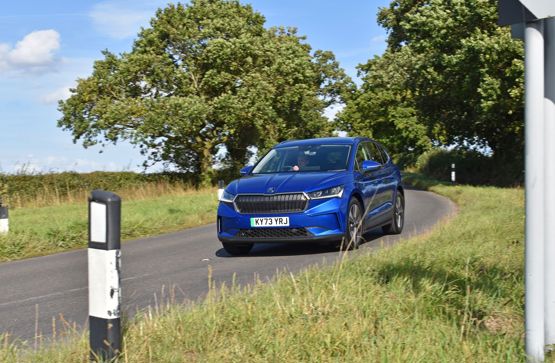
Overall, however, I’m tending to get at least 260 miles from a fully-charged battery. The official WLTP range is 339 miles (4.0 miles/kWh) for our model.
This has meant that I haven’t had to use the public rapid charging network more than a couple of times as I’ve been able to use a combination of destination and home charging instead.
When it comes to charging, the Enyaq offers a couple of helpful features. The ‘charging’ screen in the car’s infotainment system allows you to limit the amount of charge which goes into the battery so you don’t put more in that you want to.
The limits range from 50% to 100% (the screen recommends an 80% limit to optimise charging). If you want less charge in the EV than this – as I sometimes do - you either have to remember to go to your car and manually unplug it or – as I do – use the MySkoda app to stop the charging.
This is just one of the useful functions included in the app – more on that in my next update.
Skoda Enyaq iV 80 joins our fleet
Back in 2021, I was fortunate to drive the Skoda Enyaq iV on its UK media launch event in Scotland, and came away impressed with how strong the overall package was.
So when I learned I’d have the keys to the Fleet News long-term Enyaq for the next six months I was more than happy.
Of course, with high expectations comes the risk of disappointment even if the reality falls short by just a tiny amount, but so far I’ve got nothing but praise for the latest addition to our fleet.
Our Enyaq is the 80 Suite trim level in optional Race Blue Metallic (£660), and it looks great. Sitting on 19-inch wheels, it is well-proportioned, with the prominent Skoda grille giving it plenty of road presence.
There’s plenty of room in the cabin and the equipment level is high. Standard on Suite trim is a 13-inch infotainment touchscreen, heated steering wheel, wireless Apple CarPlay and Android Auto, leather seats, black faux leather dashboard with stitching, rear view camera and the manufacturer’s virtual cockpit instrument panel.
Our test car came with the optional heat pump for battery pack (£1,025) and Plus Package (£4,830).
Plus package includes keyless entry and start/stop system, privacy glass, adaptive cruise control, traffic jam assist, blind spot detection, heated front seats, tri-zone climate control, electrically operated tailgate with kick activation, full LED matrix beam headlights with variable light distribution, and electrically adjustable driver’s seat.
This makes it a comfortable and luxurious cabin, well suited to long journeys which is a happy coincidence as our model has an 82kWh battery with an official WLTP range of 339 miles. This is an average consumption of 4.0 miles/kWh.
It can rapid charge at speeds of up 125kW, which means it can go from 10-80% in 38 minutes from a DC charger, while it will take 13 hours to charge fully from a 7.2kW AC charge point.
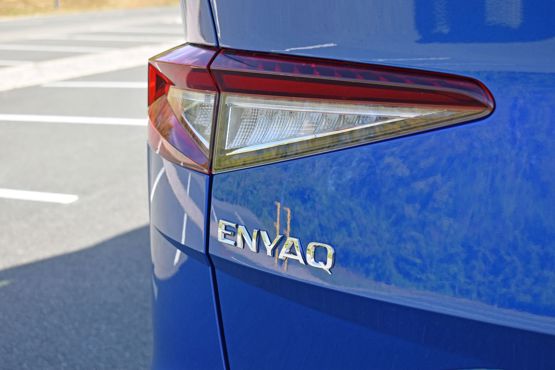
Since we took delivery of our test car, Skoda has outlined a number of technical updates for its Enyaq range, and these include increased range and performance.
These include changes to the model names, so the Enyaq 80 becomes the Enyaq 85. The new model is fitted with a 286PS motor, an increase of 82PS over our test model, and as a result the Enyaq 85 offers a 0-62mph time of 6.7 seconds – 1.8 seconds quicker than the outgoing model.
Changes to the battery and energy management software have increased WLTP range by 12 miles to 351 miles.



